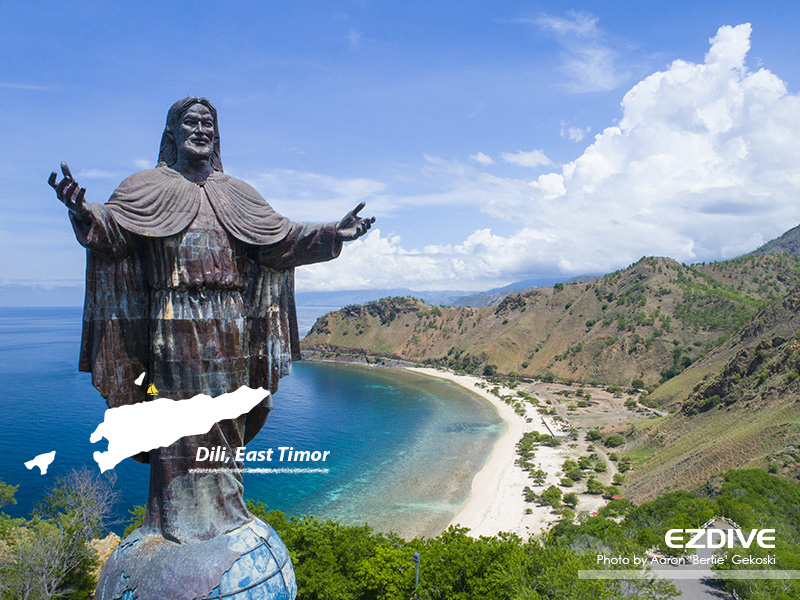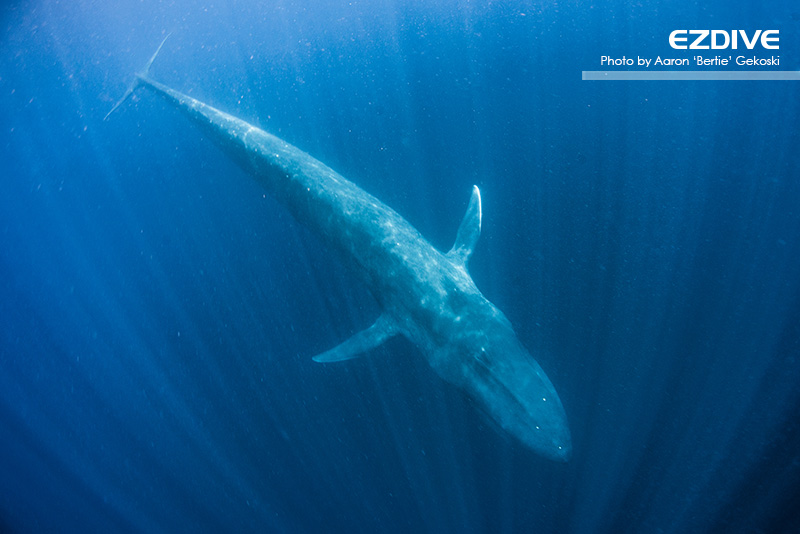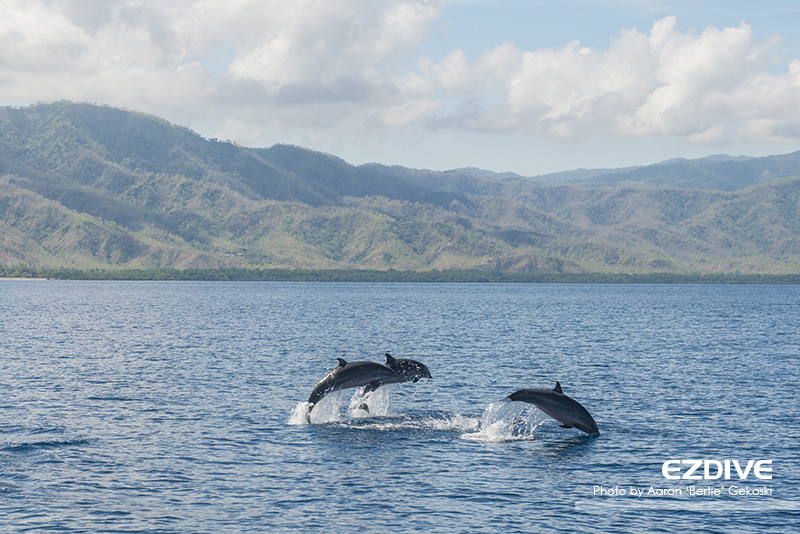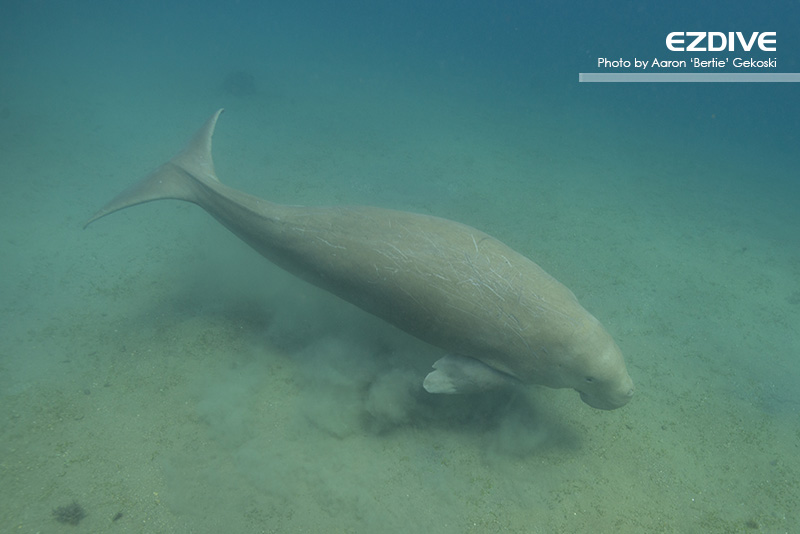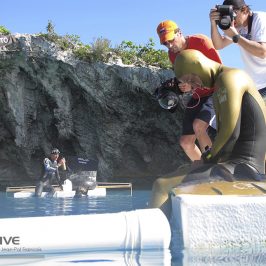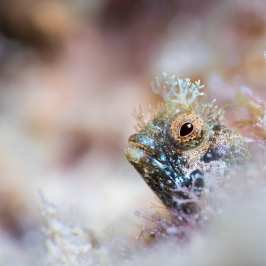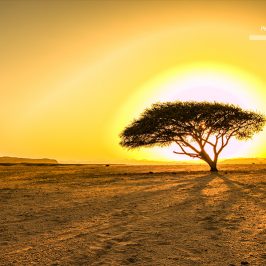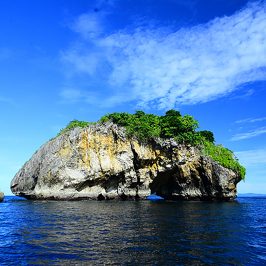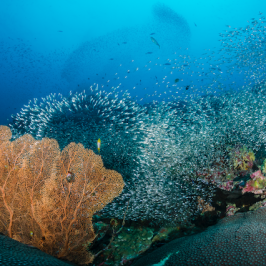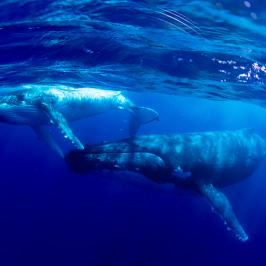A remote body of water in Southeast Asia harbours an astonishing secret.
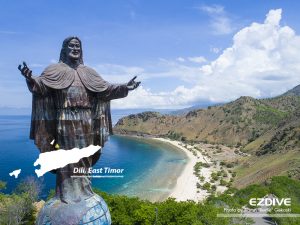
Photo and Text by Aaron ‘Bertie’ Gekoski
At only 25km wide, the Ombai/Wetar Strait is a slender channel that separates Timor-Leste from the island of Atauro. On the surface, it is a rather unprepossessing stretch of ocean. However look a little deeper and a different picture begins to emerge.
Located in the pathway of the Indonesian Throughflow (the major current connecting the Pacific and Indian Ocean), the Strait boasts the largest movement of water on the planet: 5 million cubic metres per second works its way through this narrow gap, at depths of over 3000m.
With this mass aquatic movement, come upwellings thick with nutrients and marine life. Sharks, large schools of pelagic fish, turtles, mola mola, and important prey species such as giant squid can be found here in abundance. This in turn attracts 24 different species of whales and dolphins.
Professor Karen Edyvane is a marine biodiversity, conservation and ecosystems specialist, and a UN-recognised ocean expert on the ecosystems of Timor Seas. She has been studying these waters for the best part of a decade. “Our findings confirm Timor-Leste as a major global cetacean biodiversity hotspot, both in terms of species diversity and also, cetacean abundance. Including some of the world’s most threatened and endangered species,” she says.
Given the amount of oceanic activity, Timor-Leste remains something of an anomaly to the diving community. This can, in part, be attributed to a battle for independence with Indonesia that lasted until the beginning of the century. However, over recent years Timor-Leste has been rebuilding and opening its doors to visitors. And moving forwards, marine ecotourism could play an increasingly important role in the development of its tourism industry.
Coral, crocs and cetaceans
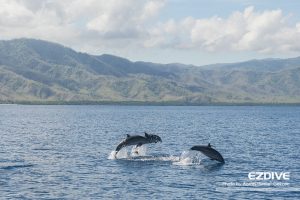
In order to broadcast their oceanic riches to the rest of the world, last year the government entered into an agreement with Scubazoo – the world’s leading underwater production company – to produce a new online dive show for ScubazooTV: Timor-Leste from Below. The series would not only document whale and dolphin species, but also reefs recognised as being the world’s most biodiverse, ancient customs involving giant crocodiles, and some very rare resident species (but more on that later).
One of our first stops was an aerial cetacean survey with Professor Edyvane. This involved zigzagging up and down the coast, identifying species and counting their abundance. On our half-day trip we saw hundreds of Fraser’s and spotted dolphins, pods of short-finned pilot whales and more.
The flight backed up Professor Edyvane’s claims: the Ombai/Wetar Strait really is a globally significant cetacean hot spot. But to gain a more intimate understanding of Timor-Leste’s marine world, we had to get a little closer to the action.
A case of the blues
Australian Kevin Austin runs the only dedicated whale and dolphin watching tours out of Timor-Leste and knows the Strait inside out. Kevin is also one of the most hospitable and amiable fellas one could wish to meet, welcoming us on board the MV Atauro for a couple of weeks of cetacean spotting.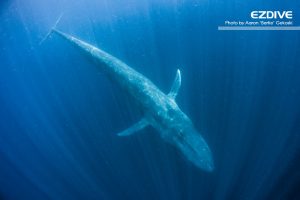
Every year, pygmy blue whales make a 10,000km round trip migration from the feeding grounds around sub-Antarctic waters, to mate and give birth in Indonesia’s Banda Sea. En route, they travel along Timor-Leste’s coast, even passing right by the harbour of Dili, Timor-Leste’s capital.
It turns out that spotting cetaceans from the air is a much easier task than getting close to them underwater, particularly when they’re blues on a mission. The whales only surface every 7-10 minutes, taking 3 or 4 breaths, before descending again, tantalisingly out of reach of freediving film-makers who have been enjoying one too many Portuguese egg tarts.
Day after day we try to get the money shot: footage of myself – as the presenter – and a whale next to each other, in order to show the scale of these marine giants. Yet every time we dropped into position, the whales would descend on their third breath, often passing right beneath us – close, but not close enough.
It wasn’t until our final day out on the ocean, in true documentary making style, that we got our shot. No superlative can do justice to sharing the marine realm with the largest animal to have ever lived; a goliath whose heart weighs as much as a car, its tongue the size of an elephant.
From brawn to brains
On the occasional day that we didn’t see blue whales, we were treated to pods of sperm whales, which Professor Edyvane believes are resident to these waters. Whilst blue whales have the length, sperm whales have the brains, which are incidentally bigger than any animal on Earth.
Their intelligence is evident by their levels of socialisation, and pods of sperm whales often number in their dozens. They just love hanging out together. We once encountered a group hanging vertically in the water column, tails facing upwards, as they gathered some valuable rest.
The sperm whales were a little more curious than the blues, too. On one occasional, director Will Foster-Grundy, photographer Gil Woolley and I slipped into the water, straight into the path of an oncoming whale. As she approached head on, she turned on one side, eyed us up, and then defecated giant squid remains all over us. We rejoiced in the water column: it’s not every day you get pooped on by a sperm whale.
Dili and the dugong
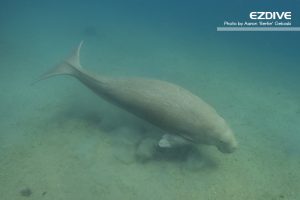 Waving goodbye to Kevin and his team on the MV Atauro, the crew and I headed to Aquatica Dive Resort in Dili. Run by Australian Desmond Lee and his Malaysian wife, Jennifer, Aquatica is one of the most established and respected dive centres in Timor-Leste.
Waving goodbye to Kevin and his team on the MV Atauro, the crew and I headed to Aquatica Dive Resort in Dili. Run by Australian Desmond Lee and his Malaysian wife, Jennifer, Aquatica is one of the most established and respected dive centres in Timor-Leste.
The famous local site is Tasi Tolu, a small enclave just outside of the city centre. Along with an interesting selection of macro life – seahorses, octopus, all types of shrimp and frogfish – Tasi Tolu is also home to Debbie and Dougie, a couple of dugongs and local celebrities.
Every day, we would turn up on the beach at 8am and watch, awaiting Debbie or Dougie’s arrival to feed on the nutrient-rich seagrass beds. And every day, Debbie would show up at 9am, regular as clockwork, to feed on a strip of grass, barely 20m from shore.
Much like the blue whales, it turned out that Debbie was a rather shy customer. As we inched towards her giant feeding cloud underwater, she would catch a glimpse of us, rise up on her fins, and settle on a stretch a little further away. Whilst this made it difficult to get decent photos, seeing a dugong underwater was one to tick off the bucket list.
As we saw during our year there, a trip to Timor-Leste is one giant adventure, and its potential for tourism is huge. Professor Edyvane summarised it beautifully: “Its beaches and seas are uncrowded, its coral reefs are recognised as the most biodiverse in the world, and its deep-yet-nearshore waters support globally significant populations of cetaceans – and very importantly provide highly accessible, world-class whale and dolphin watching opportunities and shore-based diving. For me, this combination of global biodiversity, accessibility and a young tourism industry, make it one of the most exciting, emerging marine tourism destinations in the world today.”
TRAVEL INFORMATION
How to get there?
There are direct flights from Bali and Singapore to Dili.
Currency
$USD
Languages
Portuguese, local dialect Tetum, and Bahasa Indonesia are spoken widely.
Dive operator
Aquatica Dive Resort – www.aquaticadiveresort.com
All episodes of Timor-Leste from Below are available on www.scubazoo.tv or on their Facebook page: www.facebook.com/scubazoo.tv

